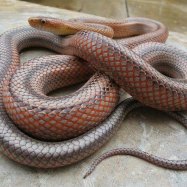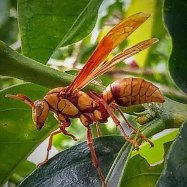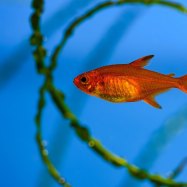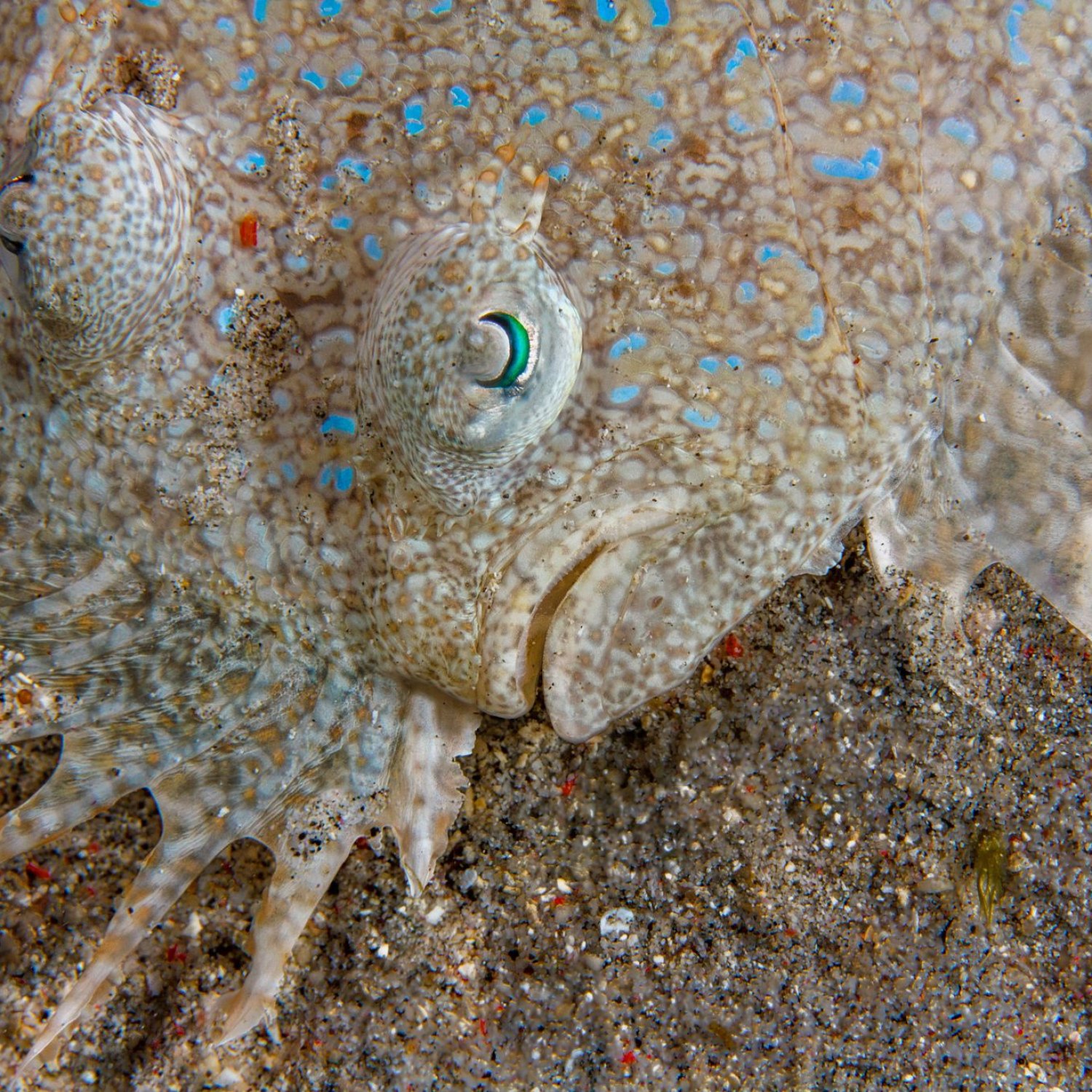
Flounder Fish
Up to 3 feet (90 cm)
The flounder fish, known for its distinct flat and oval-shaped body, can grow up to 3 feet (90 cm) in length. Found along the eastern coast of North America, this fish belongs to the Paralichthyidae family. Its unique physical traits and habitat make it a fascinating species to learn about. #FishFacts #EasternCoast #NorthAmerica
Animal Details Summary:
Common Name: Flounder Fish
Kingdom: Animalia
Habitat: Coastal waters
The Fascinating Flounder Fish: Secrets of the Ocean Floor
The ocean is full of mysterious creatures, and one of the most unique and captivating animals that reside in its waters is the flounder fish. This flatfish is unlike any other with its peculiar body shape, stunning colors, and impressive abilities. In this article, we will dive deep into the world of the flounder fish, explore its distinctive features, and uncover the secrets of its life in the coastal waters.Meet the Flounder Fish
The flounder fish, scientifically known as Paralichthys dentatus, is a member of the animal kingdom, specifically under the phylum Chordata Flounder Fish. It belongs to the class Actinopterygii, also known as ray-finned fish, and the order Pleuronectiformes. The flounder fish falls under the Paralichthyidae family, which includes both right and left-eyed flounders.A Habitual Coastal Resident
The flounder fish is a habitual resident of the coastal waters, making its home along the eastern coast of North America, from Massachusetts to the Gulf of Mexico. It is also found in the Atlantic Ocean, mainly in areas close to the shore.With its flat and oval-shaped body, the flounder fish is perfectly adapted to life on the ocean floor. It can be found in sandy or muddy bottoms, where it can easily camouflage itself and blend in with its surroundings. This helps the flounder fish avoid predators and catch its prey.
A Carnivorous Hunter
Just like its ocean-dwelling counterparts, the flounder fish is a carnivorous hunter. It preys on smaller fish, crustaceans, and mollusks, using its sharp teeth to catch and tear its food Florida Mouse. Its unique body shape, with both eyes located on one side of its head, allows the flounder fish to lie flat on the ocean floor and ambush its prey without being noticed.A Color-Changing Chameleon
One of the most fascinating features of the flounder fish is its ability to change colors depending on its surroundings. This color-changing ability is known as "metachrosis," and it allows the flounder fish to adapt to its environment and evade predators.When the flounder fish is on a sandy bottom, it will appear pale, blending in with the sand. On a muddy bottom, it will turn a darker shade of brown or gray, making it almost invisible to its predators. This color-changing ability also helps the flounder fish sneak up on its prey, making it an efficient hunter in the ocean.
The Impressive Size of the Flounder Fish
Despite their small size, flounder fish can grow up to 3 feet (90 cm) in length. They have a lifespan of approximately 7 years, with their growth rate dependent on various factors such as water temperature and food availability.From United States: The Journey of the Flounder Fish
The flounder fish is native to the United States, with its natural range spanning the eastern coast. However, due to its popularity as a food source, the flounder fish has been introduced to other parts of the world, including Europe and Asia.The United States is the leading producer and exporter of flounder fish, mainly from states such as North Carolina, New York, and Virginia. In addition, the United States also has strict regulations in place to ensure sustainable fishing practices, ensuring the longevity of the flounder fish population.
Unleashing the Potential of the Flounder Fish
Apart from being a popular food source, the flounder fish has many other potential uses. Its skin contains a unique protein that has been found to have anti-aging properties, making it a valuable ingredient in the cosmetic industry.On the other hand, the eyes of the flounder fish have inspired advancements in the field of optics. Its eyes are situated on the same side of its body, allowing it to have a wide field of vision. This unique arrangement has inspired scientists to create a new design for cameras that can capture images with a 180-degree angle.
The Threat of Overfishing
While the flounder fish is considered a common species, it is still under threat due to overfishing. Its popularity as a food source has put pressure on its population, and without proper management and regulations, it could lead to a decline in numbers.To combat such threats, sustainable fishing practices and strict regulations must be implemented to ensure the long-term survival of the flounder fish. It is also crucial for consumers to be aware of the source and sustainability of the flounder fish they are consuming.
Conclusion: A Marvel of the Ocean
In conclusion, the flounder fish is a marvel of the ocean with its unique body shape, color-changing abilities, and impressive size. Its use in various industries, coupled with its crucial role in the ecosystem, makes it an essential species to protect and conserve.With proper management and regulations, we can continue to marvel at the incredible features and abilities of the flounder fish for generations to come. And while it may seem like a simple flatfish, the flounder fish has proven to be a living treasure of the ocean, showcasing the wonders of nature to the world.

Flounder Fish
Animal Details Flounder Fish - Scientific Name: Paralichthys dentatus
- Category: Animals F
- Scientific Name: Paralichthys dentatus
- Common Name: Flounder Fish
- Kingdom: Animalia
- Phylum: Chordata
- Class: Actinopterygii
- Order: Pleuronectiformes
- Family: Paralichthyidae
- Habitat: Coastal waters
- Feeding Method: Carnivorous
- Geographical Distribution: Atlantic Ocean, Gulf of Mexico
- Country of Origin: United States
- Location: Eastern coast of North America
- Animal Coloration: Variable, depending on the environment (e.g., brown, green, or gray)
- Body Shape: Flat and oval-shaped
- Length: Up to 3 feet (90 cm)
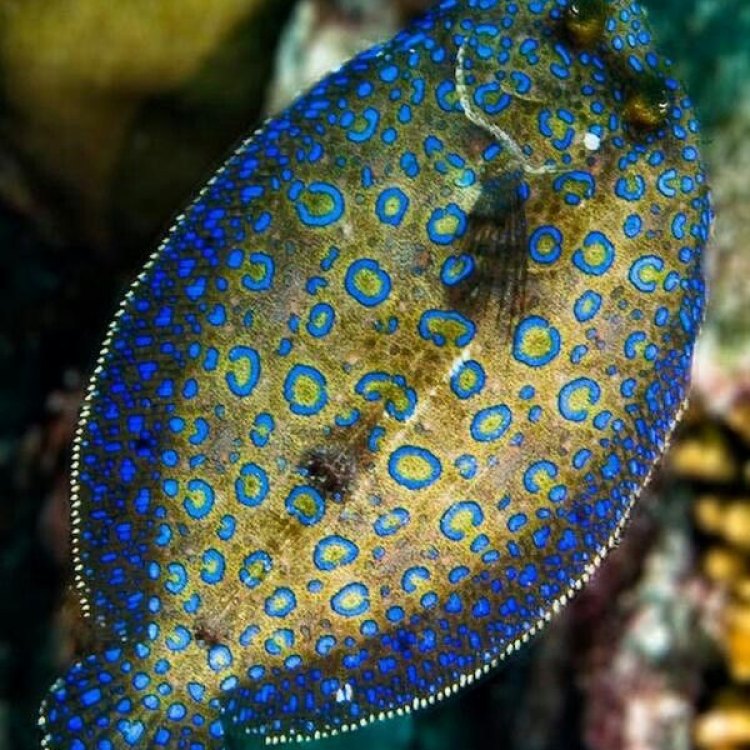
Flounder Fish
- Adult Size: Up to 3 feet (90 cm) in length, and can weigh up to 25 pounds (11 kg)
- Average Lifespan: 10 to 20 years
- Reproduction: Sexual
- Reproductive Behavior: External fertilization
- Sound or Call: None
- Migration Pattern: Some flounder species migrate between saltwater and freshwater habitats
- Social Groups: Solitary
- Behavior: Bury themselves in the sand or mud using their flattened bodies
- Threats: Overfishing, habitat degradation, pollution
- Conservation Status: Not evaluated (IUCN Red List)
- Impact on Ecosystem: Important prey species for other marine animals
- Human Use: Commercial and recreational fishing
- Distinctive Features: Both eyes on one side of the body, camouflaged coloration
- Interesting Facts: Flounder can change the color and pattern of their skin to blend in with their environment
- Predator: Sharks, rays, larger fish
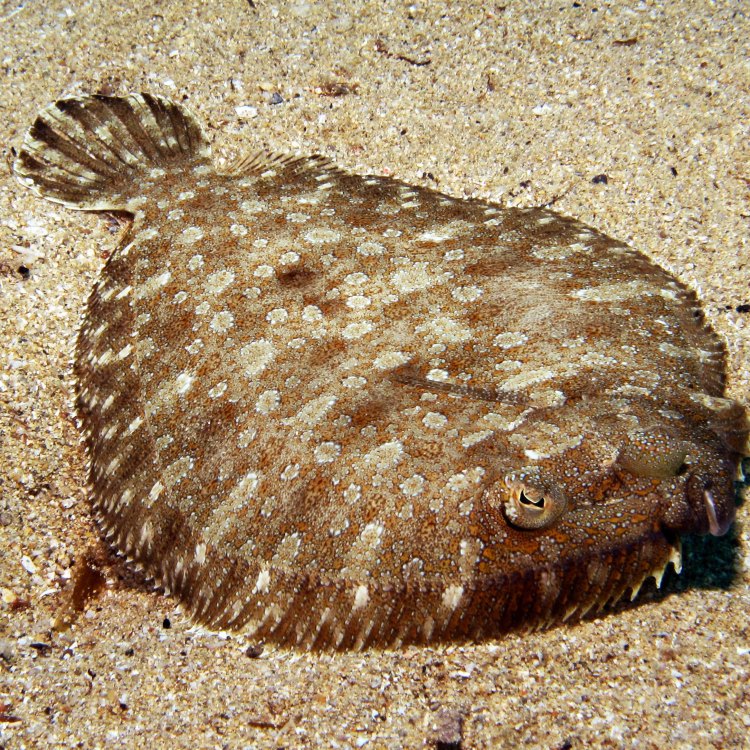
Paralichthys dentatus
A Fish of a Different Color: Exploring the Unique Features of the Flounder Fish
The ocean is full of fascinating and diverse creatures, each with their own unique features and adaptations. Among these creatures is the flounder fish, a flat, bottom-dwelling fish with a truly extraordinary appearance. With both eyes on one side of its flattened body and the ability to camouflage itself, the flounder is truly a fish of a different color. In this article, we will explore the various features of the flounder fish and discover its role in the ecosystem, impact on human use, and potential conservation concerns PeaceOfAnimals.Com.The Physical Appearance of the Flounder Fish
The flounder fish, also known as the flatfish, is a member of the family Pleuronectidae, which includes over 500 species. They can be found in both saltwater and freshwater habitats around the world, with a particular abundance in the Atlantic and Pacific oceans. The average adult size of a flounder is up to 3 feet (90 cm) in length and can weigh up to 25 pounds (11 kg), although some species can reach even larger sizes.One of the most distinctive features of the flounder is its asymmetric body. Unlike most fish, the flounder has both eyes on one side of its head, which is the upper side. The lower side is usually pigmented to blend in with the ocean floor, while the upper side is lighter in color to mimic the light filtering through the water. This unique feature allows the fish to lie flat on the ocean floor, camouflaged and almost invisible to predators and prey.
In addition to its flattened body, the flounder has other physical adaptations that make it well-suited for its bottom-dwelling lifestyle. Its mouth is located on the underside of its head, allowing it to easily catch prey while lying on the ocean floor Freeway Ball Python. The flounder also has a specialized swim bladder that helps it regulate its buoyancy, allowing it to stay close to the ocean floor without sinking.
The Behavior of the Flounder Fish
The flounder fish's behavior is heavily influenced by its physical characteristics and habitat. They are solitary animals, only coming together during the breeding season. Flounders are also known for their burying behavior, which involves using their flattened bodies to dig into the sand or mud on the ocean floor. This behavior serves two purposes – it provides shelter and protection for the fish, and it also helps them ambush prey by hiding and waiting for their next meal to swim by.Like most fish, flounders reproduce sexually. During breeding season, the males will emit pheromones to attract females. Once the females have been lured in, the male will fertilize the female's eggs externally. The fertilized eggs will then develop and hatch into larvae, which will eventually transform into adult flounders.
The Importance of the Flounder in the Ecosystem
Despite its seemingly unassuming appearance, the flounder fish plays a vital role in its ecosystem. As a bottom-dwelling fish, it feeds on small invertebrates and crustaceans such as worms, crabs, and shrimp. This makes the flounder an important prey species for larger marine animals, including sharks, rays, and other fish.At the same time, flounder also act as a natural ecosystem filter, consuming large quantities of small animals as they sift through the sand and mud on the ocean floor. This helps maintain a balanced and healthy marine environment.
Human Use and Conservation Concerns
The flounder fish has been an important food source for humans for centuries. Commercial fishing of flounder is a big business, with many countries having a significant market for the fish. Flounders are also a popular target for recreational fishing, with many anglers enjoying the challenge of catching these cleverly camouflaged fish.However, the popularity of flounder fishing has led to concerns over the sustainability of the species. Overfishing, habitat degradation, and pollution are some of the biggest threats faced by flounders today. These issues not only impact flounder populations but also have a ripple effect on the entire marine ecosystem. As such, conservation efforts are necessary to protect flounder populations and maintain a healthy marine environment.
Sadly, the current conservation status of flounder species is not evaluated, according to the International Union for Conservation of Nature (IUCN) Red List. This highlights the lack of understanding and research on the species and the need for further studies to better understand and protect them.
Fascinating Facts About the Flounder Fish
Aside from its unique physical appearance and behavior, there are many fascinating facts about the flounder fish. One of the most interesting is their ability to change the color and pattern of their skin to blend in with their surroundings. This is achieved through pigment cells called chromatophores, which they can quickly expand or contract to match the color of the surrounding environment. This makes them masters of camouflage and helps them avoid predators and sneak up on prey.Another fun fact about flounders is that they can migrate between saltwater and freshwater habitats. While most species reside in the ocean, some flounder species can tolerate and thrive in both environments. This adaptability allows them to explore new areas and find food sources in different habitats, further showcasing their remarkable survival abilities.
In Conclusion
In summary, the flounder fish is a truly extraordinary creature with unique physical features, behavior, and adaptability. With both eyes on one side of its flattened body and the ability to change its skin color, the flounder is a master of camouflage. The species also plays an important role in the marine ecosystem as both a prey and an ecosystem filter. However, the increasing threats of overfishing, habitat degradation, and pollution highlight the need for conservation efforts to protect this fascinating fish and maintain a healthy ocean environment for future generations. So let us appreciate and respect this fish of a different color and work towards its protection and preservation.
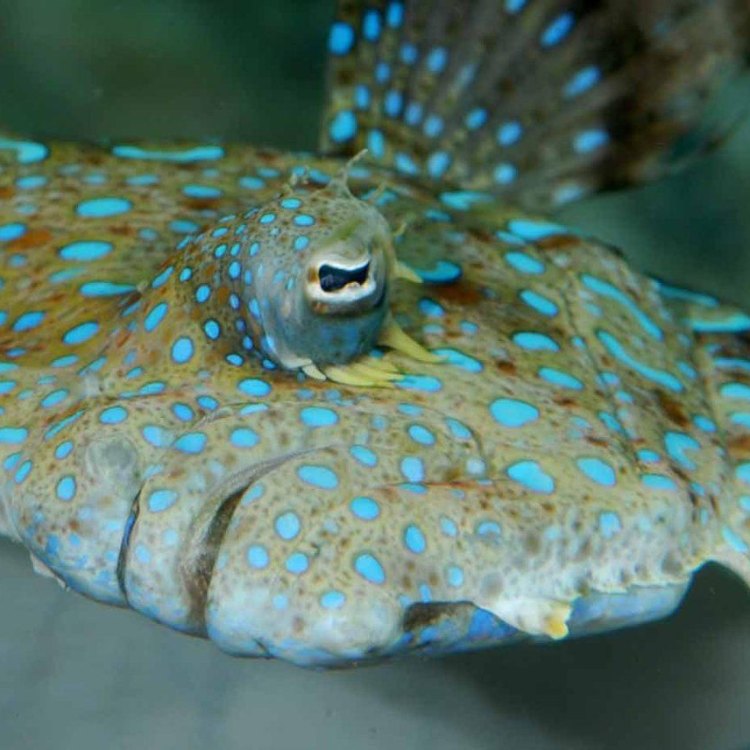
The Fascinating Flounder Fish: Secrets of the Ocean Floor
Disclaimer: The content provided is for informational purposes only. We cannot guarantee the accuracy of the information on this page 100%. All information provided here may change without prior notice.




